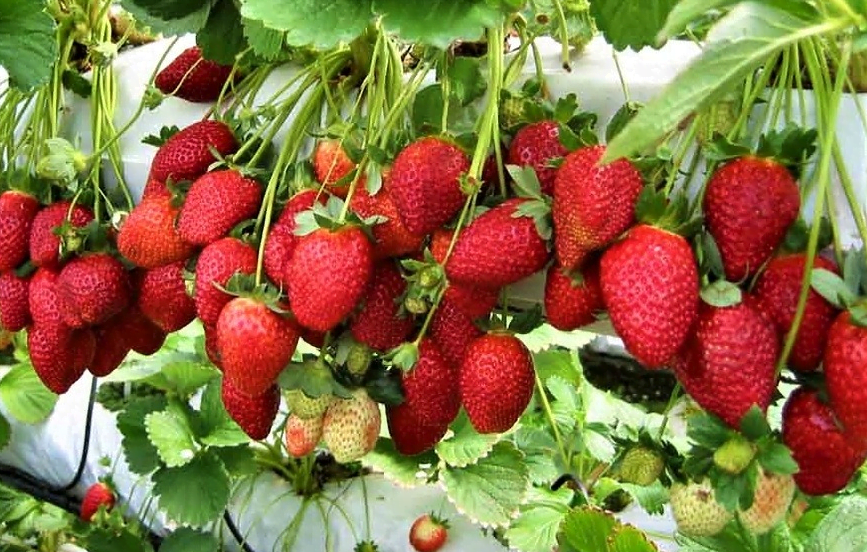Recently, reports about the collapse of large vertical farms or about their transfer to the Middle East have become more frequent. This is not surprising, as vertical farms require significant investment and are quite expensive to operate. If modern greenhouses use electric lighting only during periods of insufficient natural light, in enclosed rooms it must be used all year round. Currently, vertical farms grow mainly microgreens, lettuce, and basil, which are low-growing plants with a short growing cycle. The problem is that they quickly saturate the market – no matter how useful microgreens are, they are not food, but seasoning for a salad or a sandwich.
There have been recent reports of vertical farming of saffron, the world’s most expensive spice. Yes, saffron is expensive, but how much of it do you need? With an increase in supply in the market, its price will quickly decrease. In addition, saffron is grown from bulbs, and growing them requires a lot of time, so the cost of purchasing planting material greatly affects the cost of saffron. Labor costs for harvesting the stamens of flowers are also very high.
Many owners of vertical farms consider growing strawberries and this is justified. Strawberries are short-growing, demanded on the market, and require less energy than cucumbers or tomatoes, which is why more and more modern greenhouse farms around the world are starting to grow them.
In the traditional cultivation of strawberries – in an open field, on high trays, in film tunnels, or even in modern greenhouses – weather conditions greatly influence its yield. For example, due to warm weather in autumn and bad weather in winter, the supply of Spanish strawberries has significantly decreased this year, and cyclones flooded strawberry fields in California. The second huge problem is the shortage of workers. In traditional strawberry cultivation, the need for manual labor varies greatly, planting seedlings and care work require only a few people per hectare, but dozens of people are needed for harvesting. In large farms, there are hundreds of workers needed.
Growing in vertical farms, in the first place, allows you to solve the problem of employment. With the right selection of varieties and the provision of the best microclimate and nutrition regime, it becomes possible to have a relatively stable weekly harvest throughout the year, that is, to provide a small number of people with constant work. No less important is the possibility of regular deliveries to the market of products of stable quality and taste. The amount of sugar in strawberries depends both on the efficiency of the photosynthesis process (lighting, CO2 concentration, watering, nutrition) and on the difference between day and night temperatures. Sunny days and cool nights make strawberries sweet. Hot days prevent the berries from gaining size and mass, causing them to ripen prematurely and unevenly. Overheating is one of the main problems of strawberry growers in Spain and Italy, as well as in modern greenhouses in continental climates. Sunny weather during severe frosts causes overheating in the greenhouse with insufficient ventilation.
When growing strawberries in modern commercial greenhouses, it is very important to ensure regular supplies of products to chains or wholesalers. It is no coincidence that in recent years more and more attention has been paid to the development of programs that allow, based on the analysis of images from optical cameras, to forecast the expected harvest of tomatoes and strawberries (it is more difficult to do this with peppers and cucumbers, as it is harder for a computer to see green fruits on a green background). That is why greenhouse strawberry producers in the Netherlands and Belgium mainly grow short-day varieties in autumn and spring. However, this approach requires a large number of seedlings with a programmed yield (short-day strawberries are planted during the seedling growing period and harvested in the greenhouse). In South Korea, Japan, Canada, and Russia, greenhouse strawberry producers choose varieties with a neutral response to daylight hours, which bear fruit for several months. However, these varieties tend to have irregular yields – high yields in the first wave, bad yields in the second wave, and relatively small waves for the next several months. This is caused by the influence of weather conditions, namely overheating, which affects the planting of flower buds.
So, growing indoors allows you to get a stable, predictable strawberry harvest throughout the year with stable labor costs and relatively low energy costs (length of daylight is about 16 hours, with +20…22 ° C during the day and +10…12 °C at night). For this, you need enough cassette seedlings of a suitable variety, grown in a greenhouse or indoors. That is, there are two lines of business – the production of seedlings and of berries. Strawberry seedlings are normally produced by vegetative propagation in the open field. In recent years, cultivation without contact with natural soil has been increasingly used, but in any case, it requires several months and subsequent storage in refrigerators. But as a result, there is always a risk of infections and pests (aphids, spider mites, thrips) with seedlings. Growing from seeds in fully controlled conditions solves these problems.
The use of the site materials is free if there is a direct and open for search engines hyperlink to a specific publication of the East-Fruit.com website.





4 comments
A very good read. Thank you
Thank you for posting the optimal temperatures for growing the tastiest indoor strawberries! (20-22C daytime, 10-12C nighttime). I’ve been searching for this information!
Information very helpful. I plan to go into organic liquid fertilizer. I don’t know how challenge it will be?
There are millions of companies offering liquid organic fertilizers. Very few succeed.